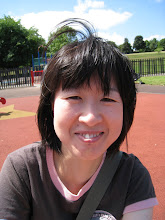Second Language Learning and Language Teaching by Vivian Cook (2008)
Keywords
Focus on FormS by Long (1991): deliberate discussion of grammar without reference to meaning
Focus on form (FonF): discussion of grammar and vocabulary arising from meaningful language in the classroom
Interesting points
-Prescriptive grammar (spelling and punctuation), traditional grammar (school grammar), structural grammar (phrase structure), grammatical competence (knowledge in the mind)
-‘Japanese does not have plural forms for nouns.’
-content words (in a dictionary), function words (in a grammar book)
-‘The morpheme is the smallest element that has meaning.’
-Universal Grammar (UG) is ‘the knowledge of grammar in the mind as made up of two components: ‘principles’ that all languages have in common and ‘parameters’ on which they vary’.
-Children start to say sentences without subjects at the beginning.
-Japanese is a pro-drop language. Japanese sentences do not have to have subjects.
-‘Japanese has the order phrase + head of phrase. e.g. noun phrase followed by postposition ‘Nihon ni’ (Japan in)’
The order of difficulty for the eight grammatical morpheme
plural ‘-s’, progressive ‘-ing’, copula forms if ‘be’, auxiliary form of ‘be’, definite and indefinite articles ‘the’ and ‘a’, irregular past tense, third person ‘-s’, possessive ‘’s’
-‘L2 learners have the same order’ regardless of the first language.
-‘Adults have roughly the same order as children.’
Principles of language
-locality (how to make questions)
-‘Japanese does not form questions by moving elements of the sentence around.’
Parameters of variation
-pro-drop parameter
-In ‘non-pro-drop’ languages such as English and German, the subject is needed in declarative sentences.
Subscribe to:
Post Comments (Atom)

No comments:
Post a Comment